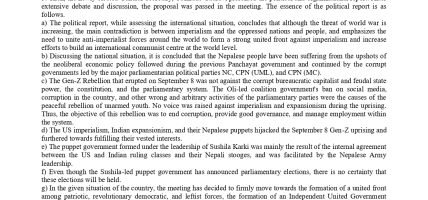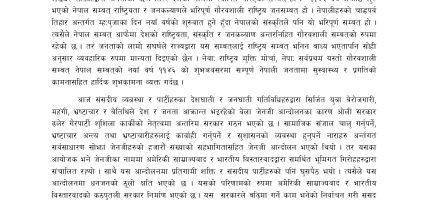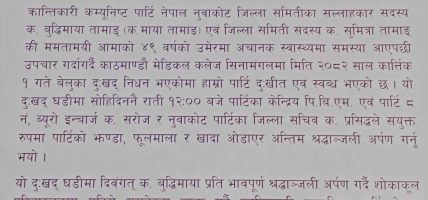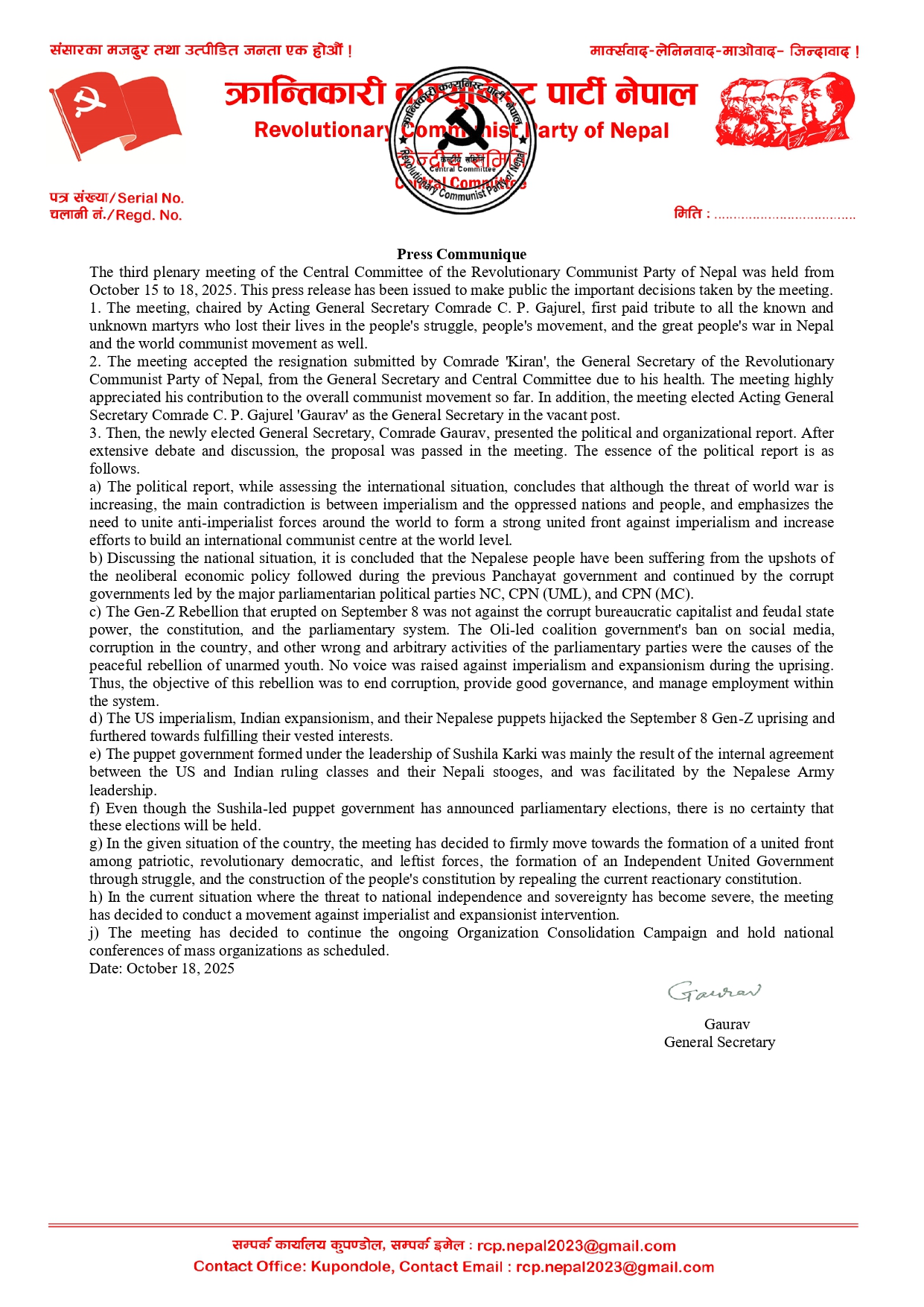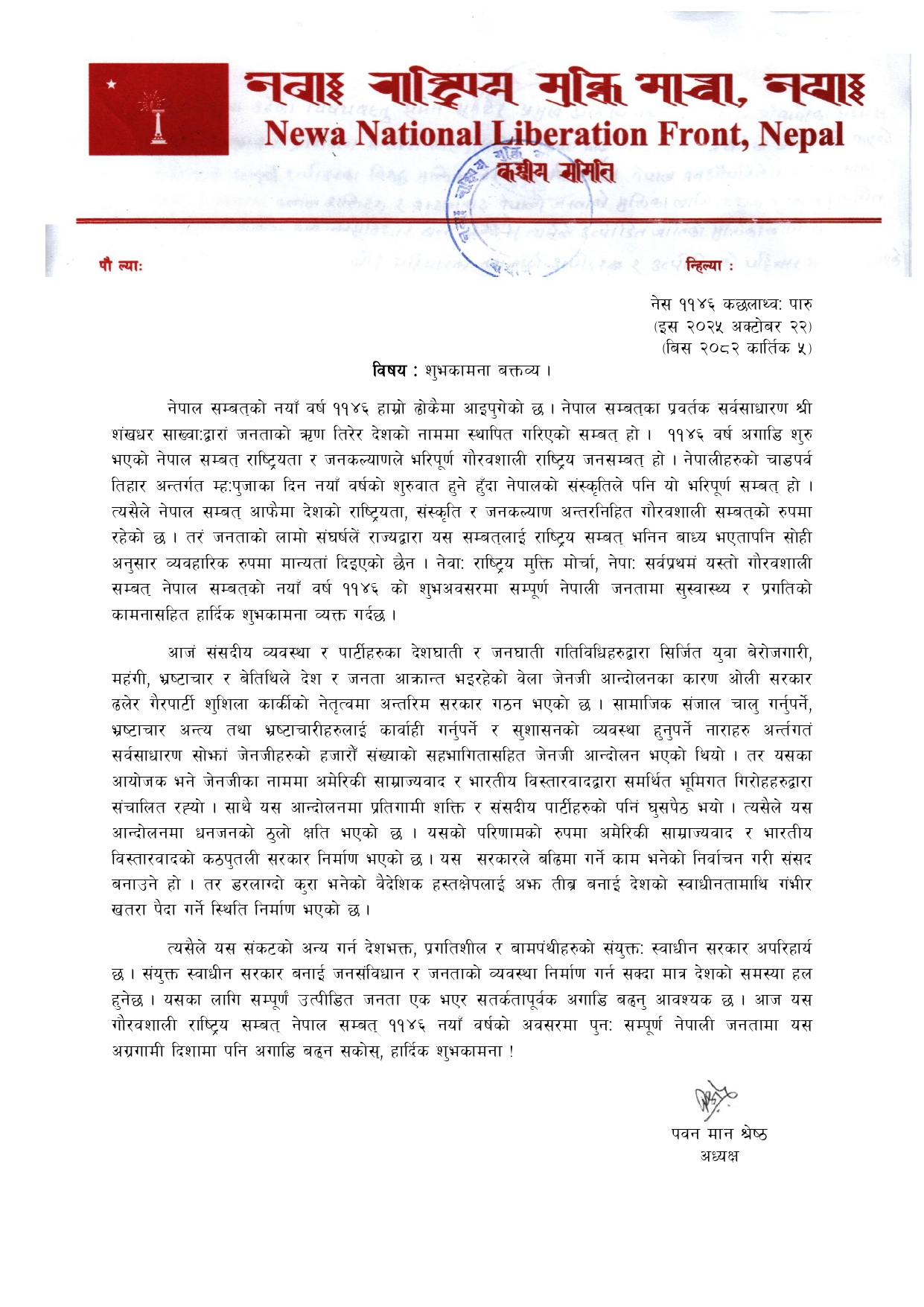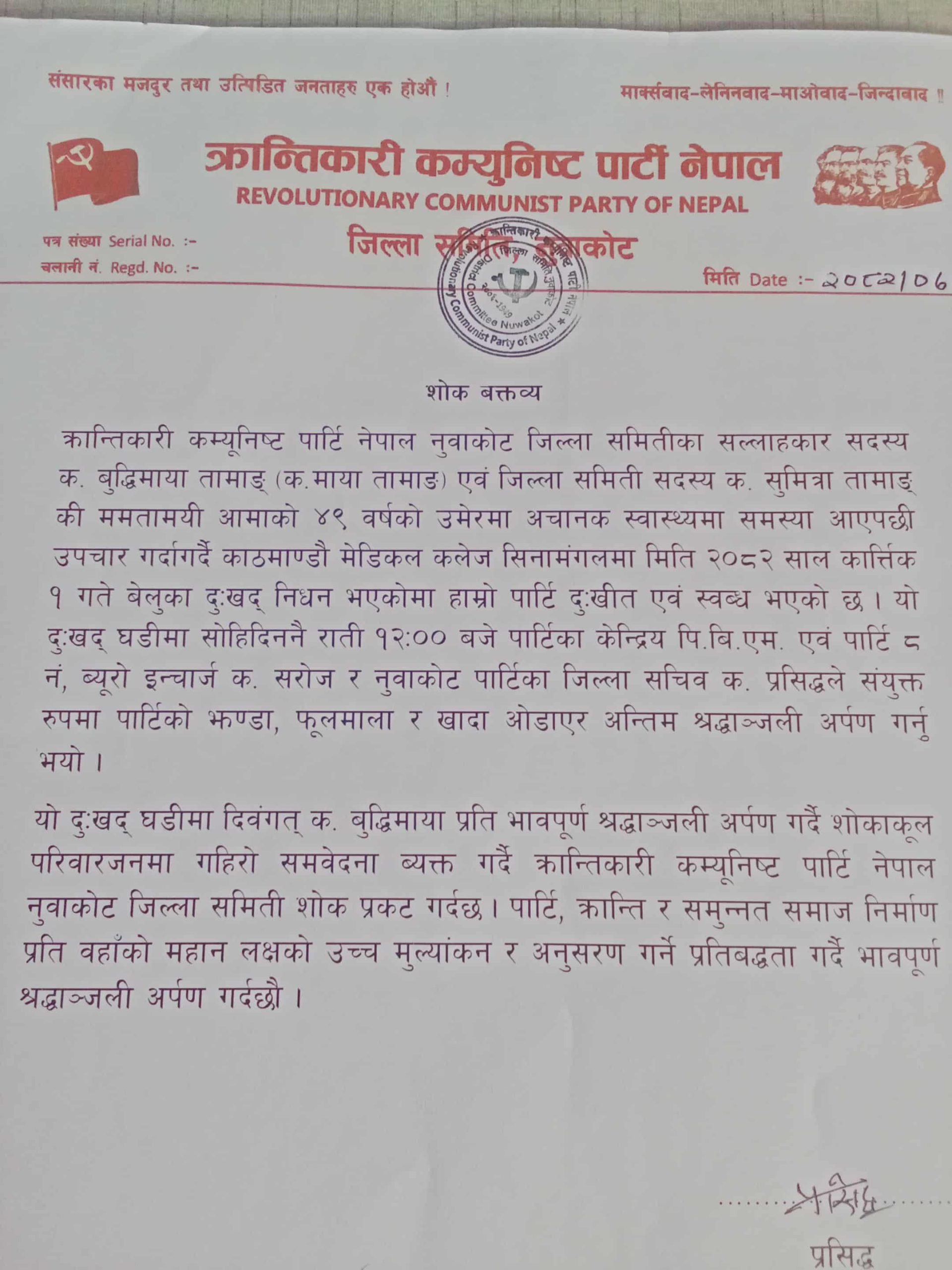Introduction:
The following is on a topic that all Marxist works touch on and must, in some capacity, touch on. After all, that is the real ultimate aim of all communists. That is, of course, the topic of revolution. Revolution is the act by which one class seizes power from another class, or, the balance of powers between classes is qualitatively reshaped. The beginning and end of every historical epoch is marked by a revolution: the end of the present (capitalist) epoch too will be the result of revolution; the revolution which will irrevocably reshape society by doing away with class antagonism. Communist revolution! Immense theoretical and practical knowledge affirms the invincibility of communist, proletarian revolution. That the red revolutionary flag will drape the whole world is a scientific fact, as certain as “the earth revolves around the sun.”
The revolutionary science of Marxism-Leninism-Maoism(MLM) has progressed immensely in achieving the goal of world revolution. The first part of this article is dedicated to synthesizing, in brief, exactly this revolutionary knowledge commonly accepted by MLMs. Chiefly, it seeks to show the real, objective, material basis that constituted the two archetypical revolutions of the previous century viz. The Bolshevik revolution and the Chinese revolution. How did the relatively scant productive forces of these nations allow for revolution when, according to Marx and Engels, the revolution is most likely to rear its head in the advanced countries? It merely summarizes, in simple language, what has already been said about this topic.
The latter section is dedicated, first, to examining other ‘Marxist’ theories that try to explain the collapse of both the USSR and the PRC. To explaining how and why they fall short (as all opportunist theories ultimately fall short). Lastly, to examining the collapse of these states– or rather, the collapse of socialism in these states – and elaborating exactly what the principal factor that led to the collapse of socialism was. This final point is one which can on no account be neglected; as in order to avoid the errors of the past, we must learn them and precisely how to avoid them.
Marxist orthodoxy (in other words, dogmatism) holds that revolutions occur in the most advanced capitalist countries. This being for two major reasons. First, as revolutions are the result of the contradiction between the productive forces and relations of production are most concentrated there. Second, socialist revolutions are the task of the proletarians of the world; the majority of this class is concentrated in the global north. However, the practical experience of the revolution has proved that revolutions occur in the weakest links of imperialism rather than at its core. The question then arises, how does our theoretical arsenal reckon us with such a disparity between the orthodox conception and lived experience?
It is precisely the answer to this question, which has been dealt with by many leading theorists of MLM, that is summarily touched on here. The answer to this question is examined by inspecting the conditions and revolutionary factors– objective and subjective– which preceded the Great October Socialist Revolution and more pressingly the Chinese New Democratic Revolution. The latter being especially pertinent as the pre-revolutionary conditions of Nepal and China mirror each other; it also being pertinent for the whole global south: the hotbed of revolution in the 21st century.
Our lived experience however has also proved that revolutions do not alone suffice. The real challenge is not the establishment of red power, but rather safeguarding it. The fortress of socialism surrounded by the dreary armies of capitalism must contend with the siege by foreign capitalists and the bourgeoisie within. Truly, the labors of Heracles pale in comparison to the labor of the communists asked to move the mountains! Not only must we fight to secure our island of socialism, we must fight the sea of capitalism that threatens to engulf just like a tsunami!
It is precisely the all-important question of how we can safeguard socialism from the many foes that threaten to undo our enormous progress that concerns us. It does not suffice to construct socialism if the socialism we build is built on sand! — as long as we do not scientifically examine the collapse of past socialism, the socialism we construct will be on a knife’s edge. Thus, the scientific examination of revolution and its undoing, of revolution and collapse, must be the order of the day.
The material basis of revolution:
Revolutions are the result of the contradiction between the productive forces and relations of production. When the relations of production become fetters on the further development of the productive forces, these relations of production burst asunder in revolutionary fire. Does this mean that the dogmatists who claim that revolutions are possible in the most advanced capitalist countries only due to the immense scale and sophistication of the productive forces are correct? Not in the least! Capitalist has progressed from free-competition capitalism to monopoly-capitalism; the exploitation of man by man has become the exploitation of the imperial periphery by the imperial core. Since the transformation of capital into monopoly capital, the imperial core has turned from a center of revolutionary activity into a center of reaction! This point is further highlighted by the two major revolutions of the previous century and the material conditions thereof.
- The Peculiar conditions of Russia in 1917:
When we speak of the present conditions of Nepal, we say that Nepal is semi-colonial, semi-feudal. Today, there is tacit agreement amongst MLMs that most semi-feudal states are also necessarily semi-colonial. In other words, that under semi-feudalism the manifestations of capital are necessarily a foreign feature: foreign imperialist monopoly finance capital. Yet, it is not necessarily so, it is only so because of modern conditions we cannot say it is necessarily so, that is metaphysical and idealist. However, for a state to be semi-feudal and not semi-colonial in the era of imperialism requires special conditions and is extremely unique.
The conditions of Russia in 1917 were unique. Russian capital was— notwithstanding the hindrances of Russian absolutism— relatively advanced and developed. Russian capital had developed into monopoly capital. Russia was imperialist and semi-feudal. How though was Russia semi-feudal? It is because though Tsar Alexander has ‘freed’ the serfs, their ‘freedom’ was purely nominal. As the serfs still has to ‘repay’ their former feudal lords. Thus, they were still tied to the land, tied to their lords, feudalism was not really done away with. Tsar Alexander thus ‘did away’ with feudalism, the same way our beloved revisionist comrades ‘did away’ with semi-feudalism here in Nepal; its abolition was— and in our case is— merely nominal. Those in power have, it seems, a penchant to pretend oppression has ceased to exist by simply wishing it away! Here, though, we must digress.
The more intriguing question though is how Russian capital became imperialistic; how it overcame the limitations of the semi-feudal mode of production to develop into not just capitalism but its highest stage, i.e., imperialism. There are two key factors that led to the metamorphosis of Russian national capital into imperialist finance capital. These are: Tsarist militarism and the very limitations of the semi-feudal mode of production.
Russian capital first grew and developed in the normal manner, however, it very quickly found the conditions of Tsarist feudalism to be extremely constraining. Capital has a tendency to grow and expand, for it to survive it demands — like a burdensome beast — for more; it must either expand continually or be threatened with extinction! It had either to do away with feudalism completely or find other avenues to expand. The law of motion of capital dictates that it travel in the path of least resistance. For Russian capital, it was easier to expand outside than to expand inside Russia. It was easier for the Russian capitalists – now imperialists– to find markets abroad rather than in Russia.
Tsarist feudalism had fashioned for monopoly capital the perfect weapon with which to conquer new markets: militarism! The Russian Empire was one of the great powers of Europe, it projected its might over many lands. The bourgeoisie of Russia found it easier and more beneficial to align with the interests of the old feudal powers than to oppose them. It used Russian militarism to conquer and secure new markets. Russia thus made incursions into Türkiye, Poland, The Balkans, Central Asia etc. Russian capitalism thus became imperialistic; monopoly capital was exported, and its export secured through militarism. Rather than going to war with the old feudal powers and raising arms, the bourgeoisie used the military apparatus of the Russian state to expand and grow.
The limits of this expansion however became apparent in 1905. The failure of Russian militarism to overcome the Japanese thus proved the futility of thus outward extension. Yet for capital to survive it must continually grow and expand lest it collapse under its own weight. Which is why the bourgeoisie turned their attention inward. They decided it better to capture the remaining markets within the domain of Tsarism itself. The 1905 revolution was a bourgeois revolution; the bourgeoisie and the feudal powers each fought a brave fight, though ultimately the bourgeoisie failed to conquer state power and had to be content with mere politico-economic breadcrumbs such as the so-called ‘Duma.’
Both the powers of old feudalism and the bourgeoisie needed war to survive, they could not survive without further war. For the old feudal powers, they had either to cement the strength of Russian militarism or face the wrath of the rising bourgeoisie; for the bourgeoisie, they required either to continue extending outside the domain of Tsarism or prepare for the arduousness of revolution. Similar yet different dramas played out across Europe. All the imperialists required for a repartition of the world, to redivide the spoils of exploitation. Tsarism was only too keen to expand its domain and secure for itself greater spoils. Thus began the First World War.
The war was a complete disaster for the Russian Empire. Russia proved to be a clumsy giant, a complete oaf and an utter failure. The Russian military shattered like glass when confronted with the sledgehammer of the German military. Russian militarism proved once again that it could not secure for imperialism the constant expansion it demanded. At once, the dam of productive relations burst open, strained by the excessive productive forces and crises caused by the war. In 1917, first, the Russian bourgeoisie waged a struggle against the remnants of feudalism. Then, the proletariat ushered in a new dawn when red October shone and brought glorious hope to humanity. The Bolshevik revolution was both a historic necessity and a proletarian revolution, yet in the face of all this the infantilists in their armchairs sit in firm denial!
Though the revolution itself was a material, historic necessity, its success was not guaranteed. Its success was only granted due to the painstaking work undertaken by the Bolsheviks and, chiefly, Lenin. It is because of the vanguard party, strong organization, correct line and constant education and agitation that the Bolsheviks won power. This is the task that also awaits us in Nepal in our pursuit of revolution.
- The conditions of China and the imperial periphery:
Clear understanding of the material conditions of China and the factors that enabled it is absolutely essential to us here in Nepal and many other comrades across the globe. This is since the conditions of China closely mirrored that of many imperial periphery countries today. The model shown by the Chinese revolution is one that many current revolutions — in India, The Philippines, and Türkiye — draw heavy inspiration from. This is due to the similarity of the condition of these counties to China. Our own revolutionary experience in Nepal proved the applicability of this model — more or less — to the conditions of Nepal. Therefore, the Chinese revolution is one we must study closely, and the summary overview presented here in no way suffices what ought to be a highly detailed investigation of this experience.
It is common knowledge that China was semi-feudal. Semi-colonial: could then China transition directly to socialism? Certainly not! The Chinese revolution was not foremost a socialist revolution; it was a New Democratic revolution. The proletariat, along with the peasants, petit bourgeoisie and national bourgeoisie, did away with the class enemies: the landlords and haute bourgeoisie. What though were the factors that led to this revolution; how is this applicable to the conditions of Nepal and the rest of the global south?
The irony – a dialectical irony – is that imperialism set in motion its own negation! The imperialists forced awake the sleeping giant; prior to the century of humiliation, the productive forces of China were not so advanced, nor were the Chinese bourgeoisie so powerful, that it could take on the old feudal lords. By forcing open the markets of china — flooding it with commodities and capital — it greatly increased the productive forces of China and made a confrontation with feudalism a material imperative.
It not only set in motion its own demise materially, but also gave the Chinese people the ideological sword with which it sliced imperialism to smithereens. It exported not only the objective, material factor that enabled the Chinese oppressed classes to smash their class enemies but, also, the subjective factor. Furthermore, it exported the ideology of the bourgeoisie (liberalism) and the emancipatory doctrine of the proletariat (communism): objective and subjective; material conditions and theory. The imperialists truly sold us the rope with which we hung them!
The empowered national bourgeoisie — awakened by the machinations of the haute bourgeoisie, was also armed with the doctrines of its liberation — liberalism and communism — realized its oppression by feudalism. This was represented, foremost, by Sun Yat-sen and the Kuomintang(KMT). These progressive bourgeois forces launched an assault against feudalism and nominally dislodged it in 1911. In 1911, the KMT seemingly did away with feudalism — but as Mao showed, this was not really so. The KMT, however, failed to recognize the oppressive nature of the comprador/bureaucrat bourgeoisie (as they were severely handicapped by their liberalism).
In reality, feudalism, and now, more importantly, imperialism was not truly done away with. It was in this context that the Chinese Communist Party (CCP) burst onto the scene! It is at this point that the KMT’s liberalism became outdated and, ultimately, reactionary. This is around the time of the first United Front with the KMT was formed against the various warlords. However, the reactionary, fascist (as liberalism is the moderate wing of fascism) KMT betrayed and massacred many communists in 1927, which ignited the independent communist struggle.
The full scope of the Chinese revolution — though absolutely essential for every MLM to study — is far outside the scope of this article. That notwithstanding, the question arises: if the Chinese revolution was bourgeois-democratic, and not socialist, how did China become socialist?
We have seen how and why the national bourgeoisie rose up against the two parasites leeching upon them, i.e., the imperialists and feudal landlords. However, this alone would not have stamped the revolution with a proletarian character – a situation like, say, in Mali or Burkina Faso today would arise. To stamp the bourgeois-nationalist revolution with a proletarian character requires the second factor: the subjective. It is only due to the CCP and, hence, the leading role of the proletariat and the science of Marxism-Leninism, that the bourgeois-nationalist revolution grew to take on a proletarian character. Does this mean that the post-revolution transition to socialism was peaceful? Far from it! The Chinese experience in fact proved that ‘peaceful transition’ is simply the revisionist way of saying “do nothing to advance socialism.”
The post-revolutionary state — controlled chiefly by the proletariat — is inherently a tool for violence. Moreover, the bourgeoisie did not peacefully surrender power. They tried every means by which to subvert the democratic dictatorship of the People’s Republic. This disruption and subversion is what necessitated the anti-rightist campaign and the Great Proletarian Cultural Revolution (GPCR). The transition itself was marked by bitter class struggle; the very existence of the state — a result of the irreconcilability of class antagonisms — proved the class struggle taking place under socialism. The only way to have a ‘peaceful transition’ is to call the bourgeois dictatorship a ‘dictatorship of the proletariat’ and replace class struggle with ‘peaceful coexistence.’ Ultimately, the transition was possible because of the Communist party: without the CCP, there would be no new China.
This is what constituted the objective and subjective factors that enabled the Chinese revolution. This is how the bourgeois-democratic revolution aided in the later construction of socialism. The PRC, between 1956-1976, was undeniably socialist! The Communist Party was the walking stick which enabled the blind proletariat to seize control and to usher in socialism.
Why 20th century socialism came undone:
One of the greatest tragedies in history is the gradual dissolution of yesterday’s socialism. By 1953 the communist specter had gained a real, tangible form in one-third of the globe. From Berlin to Pyongyang, huge swaths of the world were painted red. Then one after another, the world proletarian movement was forced into retreat; the fragile tower of cards was blown away by the hurricane of capitalist restoration. In Berlin, where the hammer-and-sickle flew mighty, it’s now been replaced with the fascist-Zionist flag.
Yet such setbacks — which we are all only too painfully aware of in Nepal — do not dishearten us. We know that the proletarian movement, like the tide, ebbs and flows; yet with each fall our movement grows stronger, and one day we shall rise up like a tsunami and wash away the filth of imperialism! From every fall we learn; we learn from the setbacks of the 20th century as well.
The development of Marxism, as with all things, moves dialectically. Erroneous views and lines are overcome, and more correct, scientific ones take their place. We must not shy away from confrontation with such errors; it is only through confronting these limitations that the science of Marxism can advance.
- Other ‘Marxist’ theories:
Our journey to finding the cause behind the undoing of socialism must first begin with an evaluation of the theories presented by other supposed disciples of Marx. We shall be as fair and objective in our evaluation as possible, notwithstanding the inherent bias present in such a task as this. We must start with the ‘true disciples’ of Marx, the ‘Orthodox Marxists.’ The proud Kautskyites draw from their teacher — who in the name of adhering to Marxist orthodoxy degenerate into the grossest distortions of Marxism.
The Kautskyite argument is a sort of shy liberalism; it toes the liberal line whilst not calling itself liberal. Pannekoek’s criticism of Kautsky’s passive radicalism should have been a criticism of Kautsky’s ‘nothingism’; it claims to be Marxist though it is not; in practice it is liberal, yet it purports not to be. The Kautskyite argument is two-fold: first, they argue that the Bolshevik revolution was simply not a proletarian revolution — that, materially, it would be impossible. We have seen above precisely why they are wrong. Second, they claim that there was a lack of democracy and that this therefore resulted in collapse. If by ‘democracy’ the Kautskyite mean a lack of parliamentarism then the USSR and PRC are guilty as charged! Yet, if the question is of Soviet democracy — proletarian democracy — they could not be farther from the truth! History proves the error of this ‘argument.’ Proletarian democracy was the most advanced in the world.
We have seen the ‘arguments’ of the dogmatic-deviationists (ah, the irony!); next, we must see the arguments of those more convicted in their dogmatism. I must say, however, that I have far more respect for this school of revisionism, than the school prior to it. I refer, of course, to the “Left”-Communists.
The infantilists have mustered whole volleys of arguments against former socialism. However, the entire litany of arguments can be boiled down into two: firstly, that the Bolshevik revolution was, in fact, a bourgeois revolution, and, secondly – though this is really a continuation of the first — that Stalin betrayed the revolution, and as every revolution thereafter reeked of ‘Stalinism’ these revolutions, too, were opportunist. Here, we draw the attention of the infantilists to two perplexing phenomena. First, that the USSR — which was said to be bourgeois — was expropriating the bourgeoisie! Hence, the bourgeoisie was expropriating itself; threatening to abolish itself! This also applies to the latter argument. If it is the reviled ‘Stalinist’ that everywhere digs the grave of the revolutionary movement, then why do they fight the bourgeoisie? Why did Stalin end the NEP and initiate collectivization, thus expropriating the bourgeoisie? The infantiles’ answers always seem to pivot away from the question — denying and inventing whole theoretical frameworks to justify their denial.
No, we cannot find a true theoretical explanation with our infantile comrades. Let us, instead, look at the theory of the Trotskyists. They offer us the theory of the degenerated workers’ state. The argument goes: with the victory of Stalin, the state bureaucrats came to power and lead the workers’ state down a retrograde path, eventuating in its degeneration. So goes their argument, as with the infantilists, that as every revolution reeked of the hated Stalinism they were never proletarian revolutions. Either that, or these revolutions, too, created workers’ states that collapsed under the weight of their own bureaucracy.
To begin, it must be said that the issue of bureaucrats is a very real threat. Something even Lenin warned about at length in The State and Revolution. Bureaucratism is an evil that exists for as long as the state exists, and is a threat for the entirety of the socialist epoch. What, then, do the Trotskyists propose? Doing away with the bureaucrats and, ergo, the state, immediately after the revolution! This is merely thinly veiled anarchism! The state cannot wither away — hence the bureaucracy cannot be abolished — until the antagonisms the state is inherently a result of are done away with: until communism. To think of doing away with bureaucrats at once is pure utopia! It is not Marxist!
What’s more, they use this so-called ‘theory’ to slander Stalin and Mao, the defenders of socialism in the 20th century. The problem with attempting to slander Stalin and Mao with this nonsense utopian-anarchist theory is that it simply does not work. In all this rubbish about the degenerated workers’ state, they fail to consider that the bourgeoisie were being expropriated and material conditions improved. Yes, these developments lead to further contradictions, down the road, but these contradictions could only exist under socialism, proving the idiocy of their theory!
Alas! Even the Trotskyists in their hundred forms have failed to give us an answer! Perhaps it is time to look at so-called ‘fellow Leninists’ to help us answer the all-important questions of collapse. These ‘comrades’ tell us that the flame of 1917 has not been fully extinguished. They tell us that the proletariat has not been forced into a global retreat; that we are still in a historic advance; that we are standing firm in the face of capitalist aggression.
Yet, to these Khrushevites and Brezhnevites, we must show another equally perplexing discovery: that the proletariat — that is said to dictate the affairs of these countries not — merely allows the bourgeoisie to exploit them, but even allows the bourgeoisie into their ‘communist’ parties! The proletariat is not gradually doing away with wage-labor, commodity production and other remnants of bourgeois right, but instead doubling down. “All power to the soviets” has been perverted into “All power to the revisionist party.” This must either mean that the proletariat lacks class consciousness and the rigor of scientific socialism or that the proletariat has become bourgeois!
We see, therefore, that all these explanations and theories fall short. Ultimately, all distortions of Marxism fall short. They fall short because they depart the firm, material basis of Marxism and drift into idealist fancy. The moment Marxism is departed from or revised, failure is inevitable.
- The Collapse:
The drama that preceded the degeneration and collapse of the Soviet Union and PRC is nothing short of a Greek tragedy. The hamartia of our protagonist being no less than the very thing that initially saved it. This historical tragedy is perhaps worthy of the epic cycle. Rivers of ink can be spilled to give this topic the full justice it deserves; what is engaged in here is by no means a comprehensive or even partial account of the collapse of yesterday’s socialism. Once again, it is recommended that every MLM study the topic fully so that the true scale of it may be appreciated. However, that notwithstanding, the following is but a scant account of the causes that led to the collapse of yesterday’s socialism.
Regarding the first cause, the degeneration of the bureaucracy, theoretically and practically, has taken hold as early as 1956, with the Khrushevite counter-revolution. Khrushchev did not — as no man really does — act at random, in complete isolation of broader trends. The Khrushevite coup was really the complete capitulation of the state bureaucrats. However, we saw an ascendant rightist tendency even under Stalin, with figures such as Beria being chief proponents of this tendency. Stalin, for all his merits, failed to recognize and suppress this very rightist tendency in time. In the face of Fascist aggression, he, on the contrary, enabled it. This was one of Stalin’s greatest mistakes, and as it was never corrected, it essentially doomed Soviet socialism. Stalin could have reversed this course — he likely intended to. However, Stalin died in 1953.
It is this very rightist tendency that came to power under Khrushchev and slandered Stalin’s name. In the name of ‘de-Stalinization’ many changes to weaken proletarian power were made; the Soviets were drained of their revolutionary vitality — they were rendered impotent. Bourgeois right was given free rein, and the capitalistic mode of production was unleashed, once more, through the agrarian reforms, Kosygin reforms and ultimately, perestroika. The bureaucrats — who became the new haute bourgeoisie — benefitted greatly from these reforms. This is why Mao was correct in his proclamation that “The USSR is today a dictatorship of the bourgeoisie(…).” He was right to castigate the renegade Brezhnev and the CPSU. The USSR actually collapsed in 1956; its insides were already hollow; it is only the shell — the facade — that shattered in 1991. Social socialism died during the 20th Party Congress of the CPSU!
That however begs the question: why did the revisionist bureaucrats not drop the facade and reveal their true intentions? Because dancing the dance of ‘socialism’, to the composition and choreography of capital was initially beneficial to the bureaucrats — in the same way, using the term ‘socialism’ is popular here in Nepal. This is due to two reasons. First, it granted a sense of legitimacy and continuity to the state. Second, in the 1950s ‘socialism’ was extremely popular, it is only in the subsequent decades that the revisionists dragged the name of socialism through the mud, tarnishing it and making the job of modern revolutionaries more challenging. Some, hearing this, may cry “idealism!”, yet the question posed regarding the farcical political form — i.e., the facade — is necessarily ‘idealist’. If, instead, the question was about the material essence of the political system, then we have already shown how it decayed into a dictatorship of the bourgeoisie. Eventually, ‘socialism’ became demonized in the hearts of the masses, due to the actions of the revisionists, and, thus, this political form ceased to suit the bureaucrats.
The bureaucratic revisionism also practically led to the growing impotence of the Soviets, growing corruption, etc. This accentuated the contradiction between the bureaucrats and masses. This eventually became antagonistic. This antagonism was further accentuated by foreign factors (though, this alone, was not the cause). This led to popular discontent such as strikes, riots, and protests as seen in the late 1980s. These factors were also at play in Eastern Europe.
A similar drama played out in the PRC. The bureaucrats in the CPC-right — namely, Deng Xiaoping and Liu Shaoqi — attempted, in Mao’s own lifetime, to subvert socialism, constructing a bourgeois headquarters. These bourgeois headquarters were in many leading positions in the party. The bureaucracy was degenerating rapidly into Soviet-style revisionism. China was on the crossroads between socialism and capitalism. Mao, too, was aware of this precarious situation.
If Mao was aware of these dangers, why did he not act to prevent the reversal of Chinese socialism? Well, of course, he did! He enabled the GPCR; yet, Mao and the CPC-left and the red guards only diagnosed the symptoms, not the illness itself. This is the root cause of the apparent failure of the GPCR. The analytical limitation of Mao, and most Maoists, to this day, is that they attack certain bureaucrats in the party-state. The problem is not Liu Shaoqi or Deng Xiaoping — this or that bureaucrat — but the bureaucracy itself! The continued existence of the state and, therefore, that the party bureaucracy is necessary is certainly true; however, due to the transient nature of this form, this will inevitably cause certain issues to arise. The GPCR should not be seen as an attack on certain revisionists, but on revisionism itself; not on corrupted or degenerated bureaucrats, but on the bureaucracy itself. To instill the masses with revolutionary spirit; to empower them with administrative duties; and, above all, to ensure the bureaucracy remains proletarian.
It is precisely because of this error that the red guards attacked merely this or that bureaucrat, rather than the bureaucracy itself. As a result, after the death of Mao in 1976, the bureaucrats launched a vicious coup against the CPC-left and gang of four. They — like the Khrushevites in the Soviet Union — came to power and undid socialism at a far greater speed than ever. And thus, Chinese socialism collapsed.
- The Bureaucrats and the masses:
We know that for our next exposition we will be accused of parroting Trotskyite revisionism, but we fundamentally differ from Trotsky. We are operating under a totally Maoist framework. The principal differences are three-fold: firstly, Trotsky believed the bureaucracy to be inherently malignant, whilst we challenge this perception; secondly, they use their ‘theory’ to attack the socialism of Mao and Stalin, we do not; lastly, they anarchistically argue for the immediate disbandment of the bureaucracy, while we do not. Science is ultimately the product of an epistemological rupture from ideology.
Theory and practice are two contradictory aspects of the same whole; two poles of the same dialectic, or, as Lenin stated, “Without revolutionary theory there can be no revolutionary movement.” Theory and practice are bound in a mutually reciprocal relationship. Theory is derived from practice, and practice affirms the validity of theory. The collapse of socialism therefore, as it self-evident, is the decay of socialist organization and revision of socialist theory. Socialist organizations are crippled by revisionist theory, and theory is rendered impotent by the degeneration of organization. The collapse of both find their origins in one source: the degeneration of the bureaucracy. Note, it is not the bureaucracy itself nor the bureaucrats themselves that are the source of such opportunism, but, rather, its impotence in the face of capital.
We must understand that in the MLM conception, what is referred to as socialism is characterized by, namely, a dictatorship of the proletariat and the socialization of the means of production, by the proletarian state. Socialism does not, in one-go, negate bourgeois — i.e., exchange-value — relations. Commodity form, money form and value form are not done away with, but are instead regulated by the workers’ state. The contradiction between wage-labor and capital still exists under socialism; this contradiction is not attenuated, but, rather, as capital stands on its last legs, is intensified! It is in this context we must consider the bureaucrats.
Mao said “the bourgeoisie are in the party”, yet this is an abstraction. Undoubtedly, the exponents of the bourgeois line constituted ‘the bourgeoisie in the party,’ but economically the bourgeoisie arose out of the bureaucracy of the party-state. The key observation to make is not so much that the CCP is bourgeois, but, rather, that it became bourgeois through the apparatus of the party-state, which lorded over the now, independent national capital.
Under socialism, the bureaucracy are members of the working class — of the advanced vanguard of the proletariat. Yet, they are placed in a position where they have dominion over capital and, thus, become alienated from wage-labor. This is the material origin of revisionism: the source of the degeneration of the bureaucracy. They, like the petit bourgeoisie, are in a vacillating position between wage-labor and capital. The resolution — the ultimate resolution — to this contradiction is revolution: Cultural Revolution! Along with a litany of functions ascribed to it, the resolution of the antagonism between wage-labor and capital, under socialism, is possible only through Cultural Revolution.
The Cultural Revolution enables wage-labor to continue its prolonged struggle. The dictatorship of the proletariat is constantly subjected to an assault by capital: by the remnants of the old bourgeoisie, the foreign imperialists, and the bureaucracy. As the proletarian bureaucrats become evermore alienated from wage-labor, they grow increasingly bourgeois; they have emerge as a nouveau bourgeoisie. In order that this is avoided, the revolutionary, class-conscious proletariat must strike at the bureaucracy. It must drag the wayward bureaucracy, kicking and screaming, back into alignment with the interests of wage-labor. The Cultural Revolution — the democratization of society — enables them — empowers them — to do so.
Conclusion:
In summary, the following has been established and proved in this article:
- Both the Chinese and Russian revolutions established socialism and were enabled to do so by their material conditions, thus disproving the orthodox dogma that revolutions can only arise in the most advanced countries.
- The theories of the revisionists are nonsense and not Marxist
- Socialism came done as a result of the bureaucracy. Politically, the bourgeoisie under socialism, constitutes the advocates of the bourgeois-line; economically, the bourgeoisie grows out of the very apparatus of he party-state, due to its transient nature as a state on the wane.
ishanmaharjan0096@gmail.com



